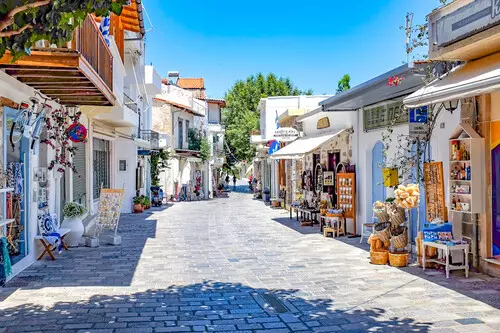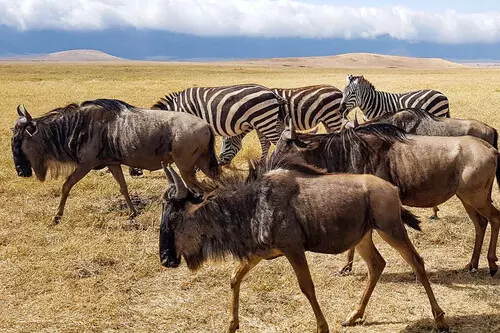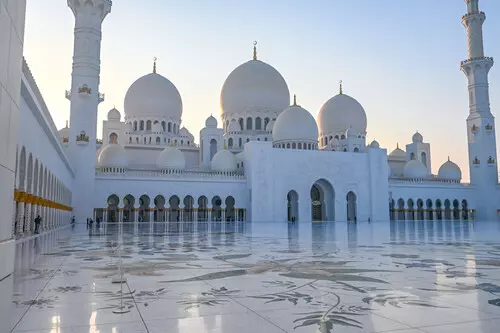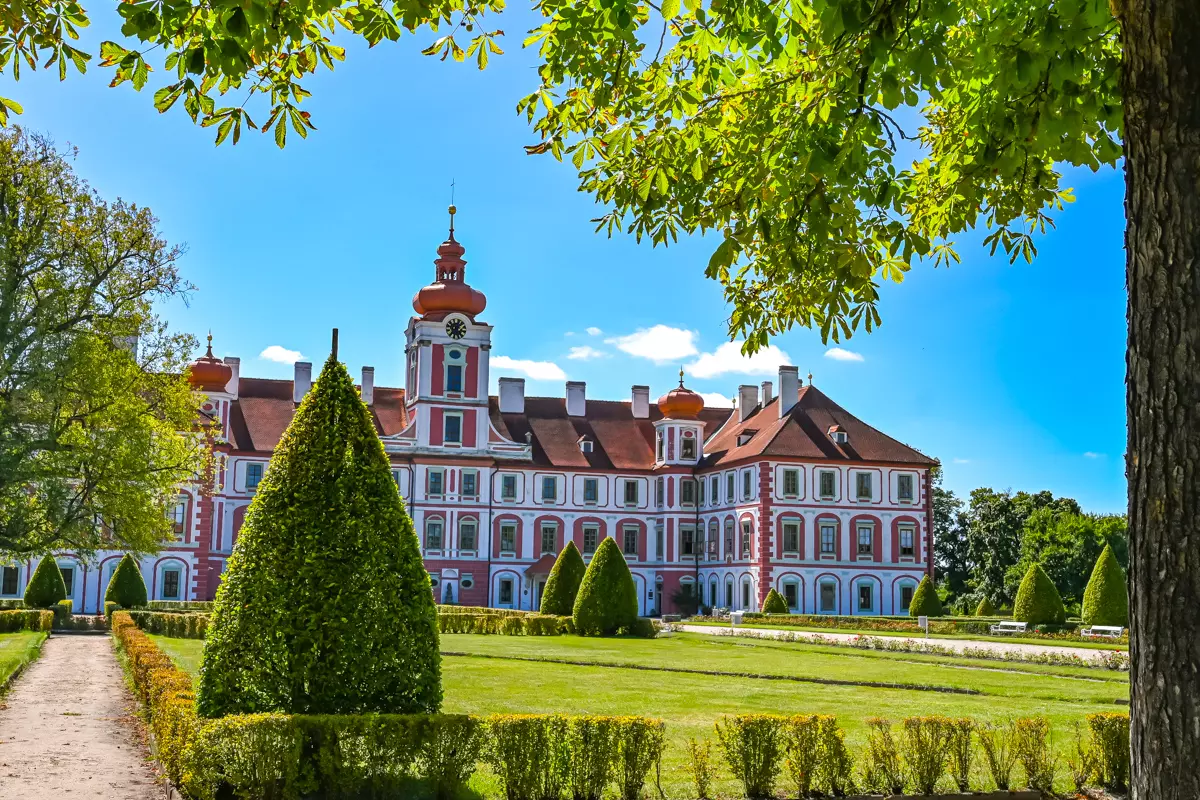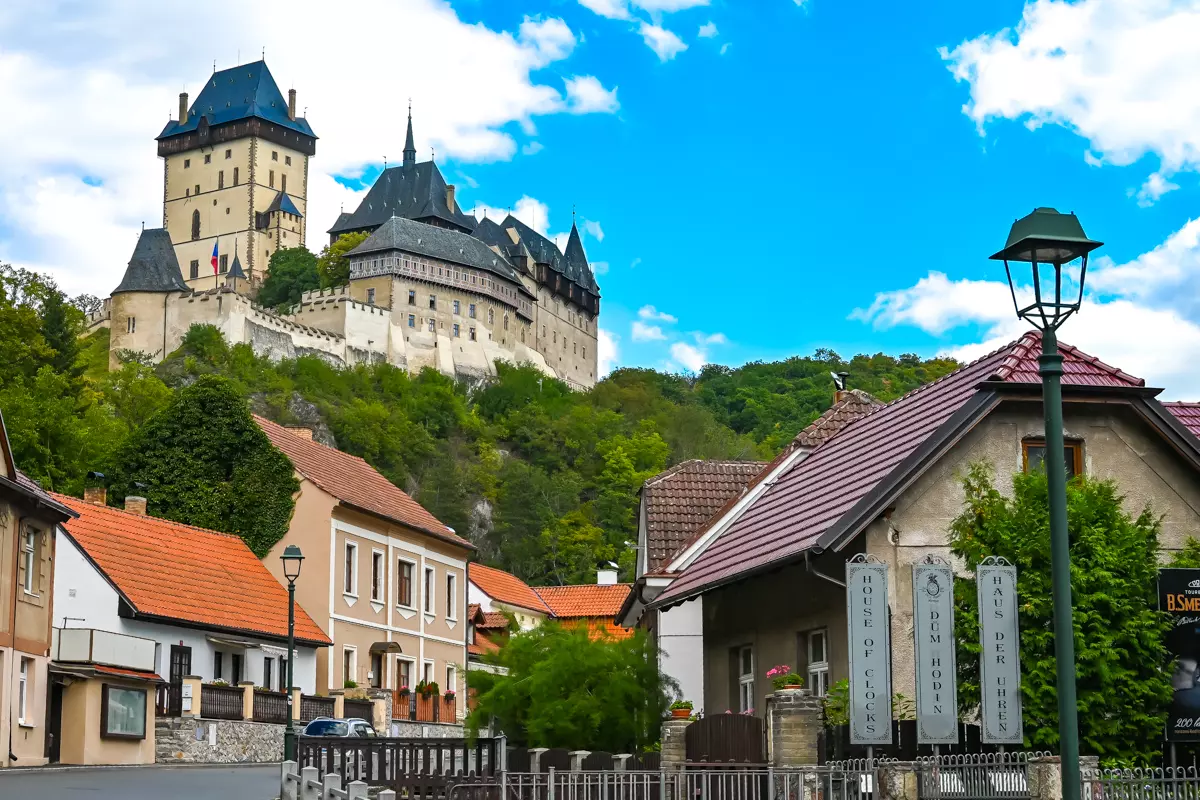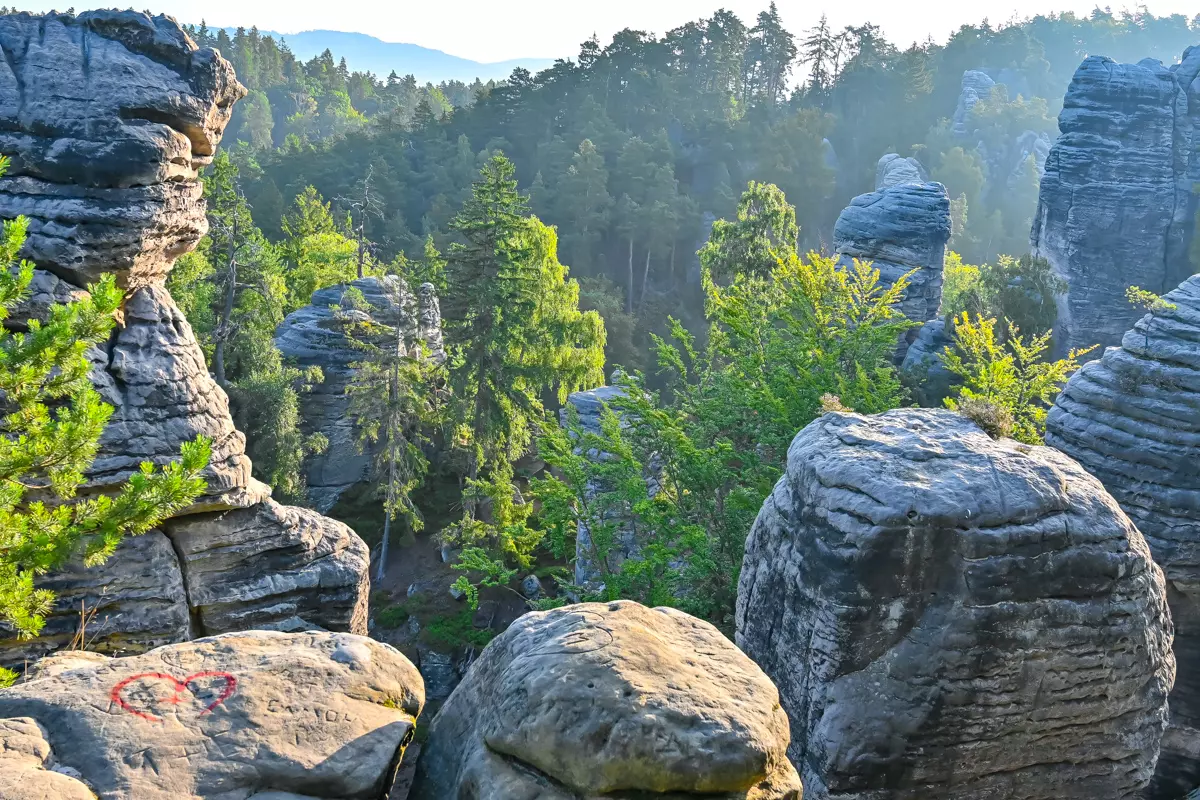12 Best Things To Do In Tunisia [Travel Guide!]
For some, Tunisia is simply an emerging destination for relaxing holidays, but for me, it’s a vibrant gem of North Africa, where the blue of the Mediterranean harmoniously meets the desert. Tunisia offers something for every traveler: from the ancient ruins of Carthage, echoing its rich history, to endless sand dunes, vibrant cities, traditional villages, and bustling markets filled with colors and scents.
It’s a land of contrasts, where you can relax by the pool, on a tranquil beach, or embark on an adventure to explore its vibrant culture and hidden gems. Here’s my comprehensive guide to the best things to do in Tunisia.
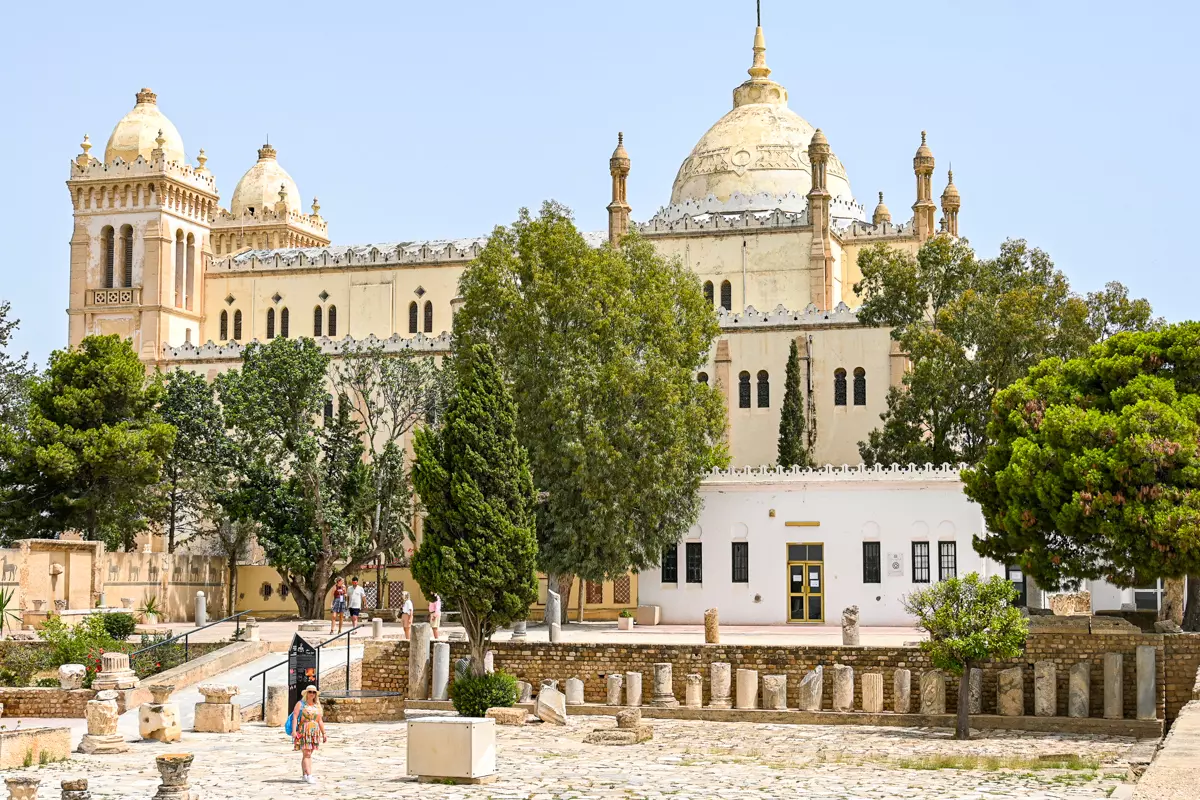
Things To Do In Tunisia
Carthage
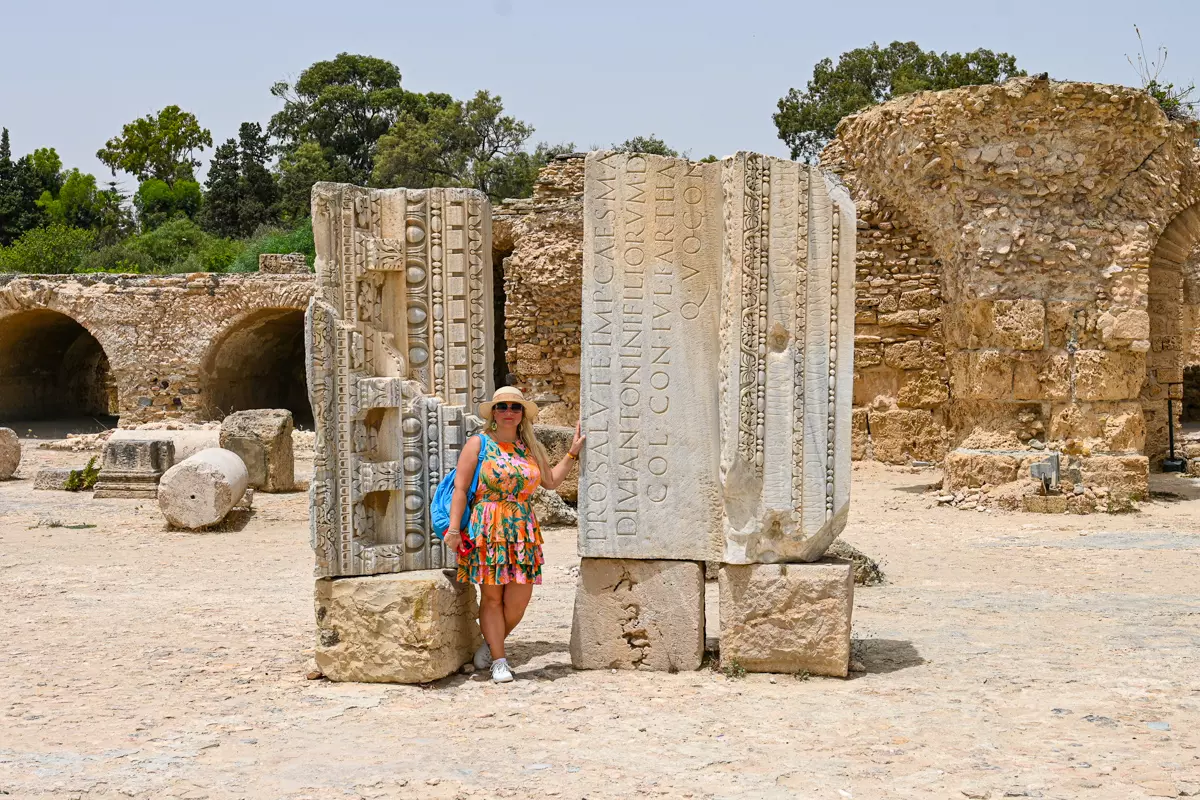
Carthage is a site of ancient ruins, including temples and Roman dwellings. Founded in 814 BC, this city was once renowned for its fierce warriors. Unfortunately, over time, it was defeated, destroyed, burned, and ravaged. According to legend, the entire city was covered with salt to prevent even the smallest patch of grass from growing there. Over time, Carthage became known as a ghost city. About a century later, it was rebuilt as a Roman colony, becoming a place of great significance.
Today, the ruins of Carthage remind visitors of the once-thriving city that stood here. Archaeological excavations, which began in the 19th century, bring the past to life, with the remains of buildings and other artifacts revealing a deep history. In Carthage, you can explore remnants of villas, a Roman amphitheater, streets, and more. Valuable finds from these excavations are displayed in the National Museum of Carthage, where you can see them up close.
Accommodation: Here are all the available hotel options in Tunisia.
Sidi Bou Said
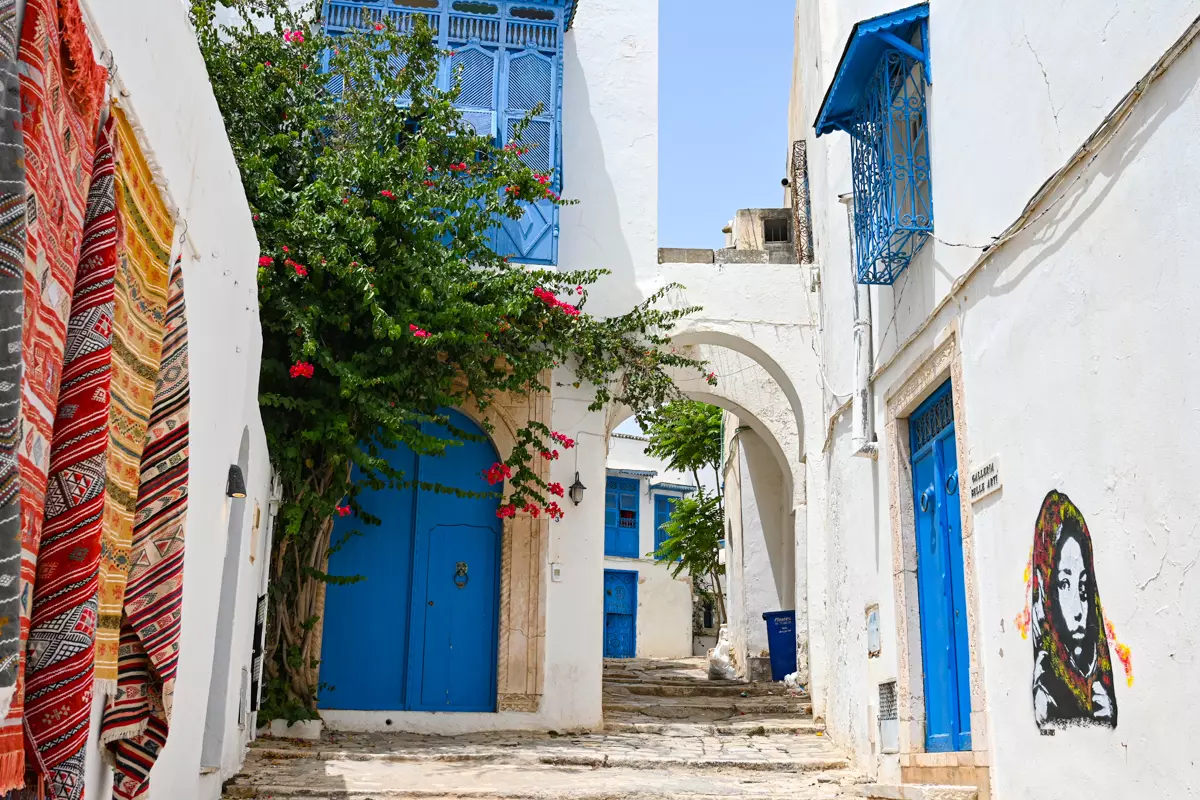
This distinctive and very picturesque town in Tunisia often surprises visitors with its striking resemblance to traveler-favorite Crete or the romantic Santorini. The essence of this town lies in its white houses and blue shutters, which unmistakably evoke images of coastal Greek villages. With its dominant white and blue color palette, cozy atmosphere, abundant flowers, and enchanting ambiance, Sidi Bou Said attracts not only curious travelers like me but also artists and artisans. Here, you’ll find art galleries and craft workshops, making it an excellent spot to purchase locally handcrafted items.
While visiting Sidi Bou Said, I stumbled upon a local cafe and soon discovered that this town is famous for its charming cafes, where visitors can enjoy traditional Tunisian coffee. In this small town, time seems to pass more slowly. There’s no bustling crowd or rush, and it’s easy to get drawn into the slower pace of life. This is truly one of the best things to do in Tunisia!
Discover: Walking Tour of Sidi Bou Said.
Monastir
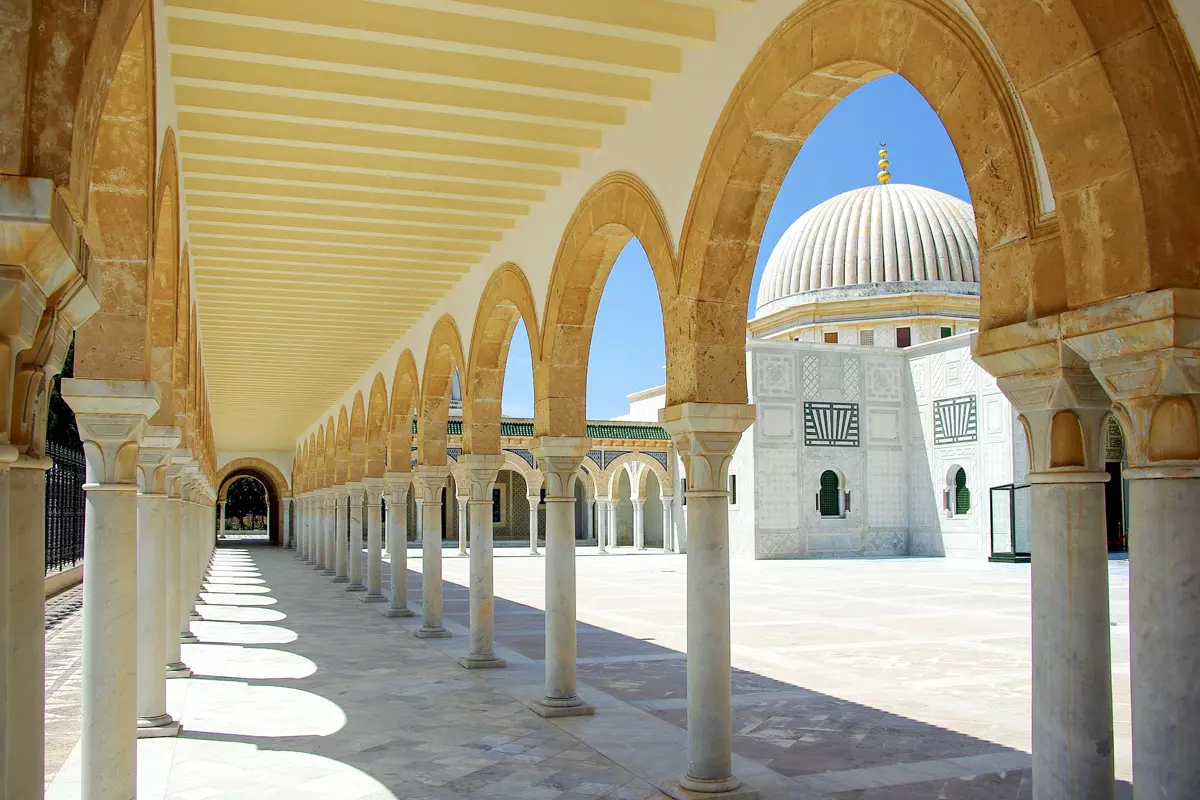
This vibrant city is a favorite among tourists, with excellent tourism infrastructure that makes it easy to reach nearby cities like Sousse and Hammamet by public transport.
Although Monastir attracts many travelers for its breathtaking beaches, this city offers visitors much more. I wouldn’t be wrong to call it a true architectural treasure trove. In the old part of the city, you’ll find many buildings that tell centuries-old stories, inviting you not only to admire them from the outside but to step inside as well.
Take a stroll through the medina, the old town of Monastir, where you’ll find a bustling market, numerous shops, and places to taste traditional dishes. Be sure to visit the Ribat of Monastir, a fortress built in the 8th century that perfectly exemplifies Islamic architecture. Another interesting landmark is the Bourguiba Mosque, built in 1963, which features an interior adorned with numerous mosaics.
El Jem Amphitheater
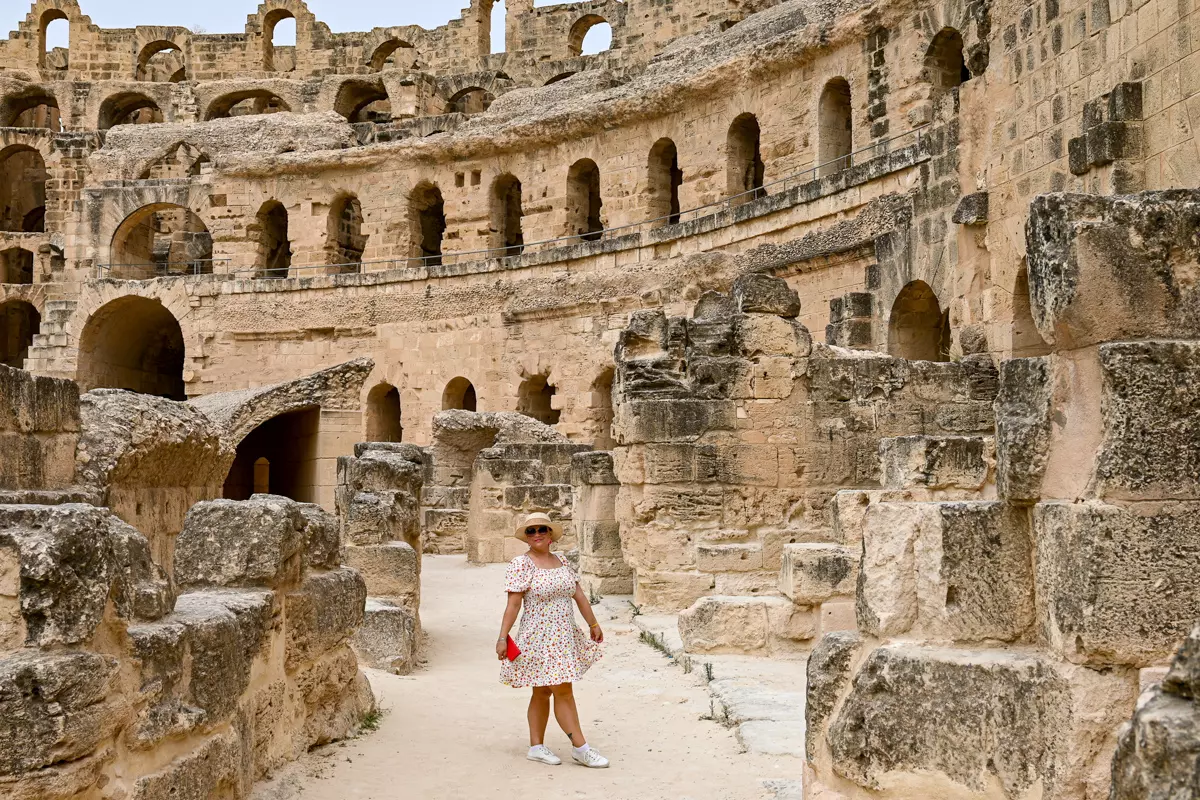
This ancient theater, a UNESCO World Heritage site, is the third largest in the world and one of the best-preserved Roman amphitheaters globally. Constructed in the 3rd century during the Roman Empire, El Jem amphitheater in what was then the city of Thysdrus took around eight years to complete. Interestingly, the amphitheater seems somewhat out of place in its surroundings, yet this only adds to its unique charm. Did you know that in ancient times, the size of a theater often indicated the population of a city? El Jem, however, was an exception – it was significantly larger than the population of the town at the time. The amphitheater hosted gladiator and animal fights as well as public celebrations.
The El Jem Amphitheater could hold around 35,000 people. For comparison, the Colosseum in Rome accommodated about 45,000 spectators. The structure is approximately 149 meters long and 122 meters wide, reaching nearly 40 meters in height. Its ruins cover a vast area, but even more breathtaking are the underground chambers where gladiators and animals were once kept before battles. These underground spaces will take you back in time, offering a glimpse into how preparations for battles took place and how such spectacles were organized. You can also climb to the highest point of the structure for panoramic views of the surroundings.
Today, the El Jem Amphitheater is one of the most-visited tourist attractions in Tunisia. Each summer, it hosts the El Jem International Music Festival. A nearby museum can also be reached on foot.
Sachara
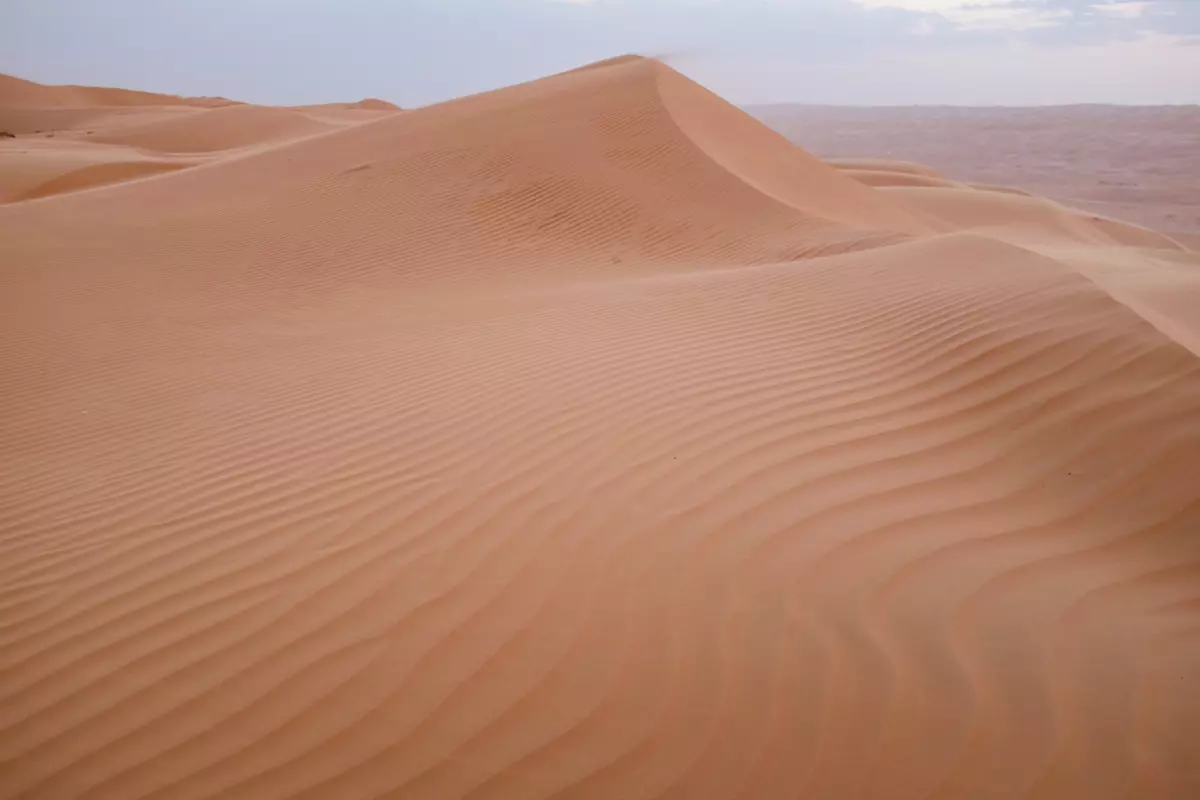
One of the best things to do in Tunisia is to visit the impressive, world-famous Sahara Desert. Interestingly, this vast desert stretches across 11 countries, and its landscape is constantly reshaped by shifting winds.
The most convenient way to explore the desert is by camel, which also adds an exotic touch to the journey. Although riding a camel may seem easy and enjoyable, my advice is not to choose long distances, especially if it’s your first time. A few hours on a camel can be quite a lot, particularly for beginners. To truly enjoy the experience, about half an hour, or even a bit less, is just right for a camel ride.
Tip: If you’d rather not plan your trip to the Sahara yourself, there are plenty of tour options available where you won’t need to worry about the logistics.
For a different adventure, you can explore the Sahara on a quad bike, a truly unique experience and one that promises plenty of adrenaline. By the way, don’t venture out on such a journey alone. It’s best to have a guide, as the Sahara is vast, with no roads or signs, making it very easy to get lost.
Hammamet
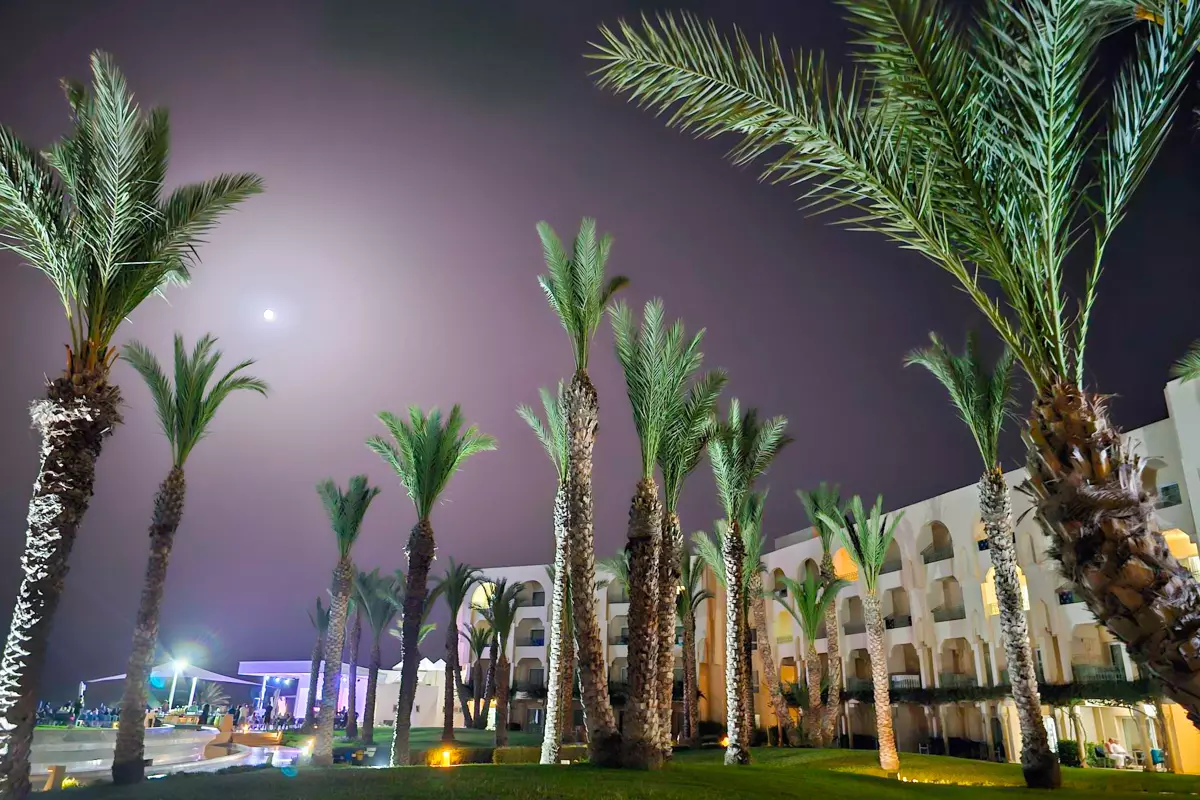
Often called Tunisia’s resort capital, Hammamet is a perfect choice for those seeking a comfortable stay amidst beautiful nature. Here, the blue of the sea blends with pristine white sand beaches, the sun shines nearly every day, and palm-lined avenues and distant orange groves add an exotic touch.
In Hammamet, you’ll find a wide selection of hotels, a variety of nightclubs, cafes, and restaurants offering delicious local dishes. For my stay, I chose the four-star Iberostar Waves Averroes hotel, which I can confidently recommend for couples as well as families with children. I loved that the hotel was surrounded by lush, well-kept grounds, had outdoor pools, and featured evening musical events.
However, in Hammamet, I would suggest not limiting yourself to the hotel grounds. The city offers many interesting and enriching attractions. Visit the medina, built in 904, and wander through the narrow streets of the old town, brimming with unique charm. Be sure to see the Grand Mosque, the bustling market, and artisan workshops, where you can purchase handmade local products. Don’t miss the fortress, which offers a stunning view of the city; there’s also a museum there, with exhibits that tell the long history of this place.
In the southern part of the city lies the modern and entertainment-filled Yasmine Hammamet, known for its luxury hotels, well-maintained beaches, children’s zones, and a yacht marina.
Accommodation: Here are all your hotel options in Hammamet.
The Capital, Tunis
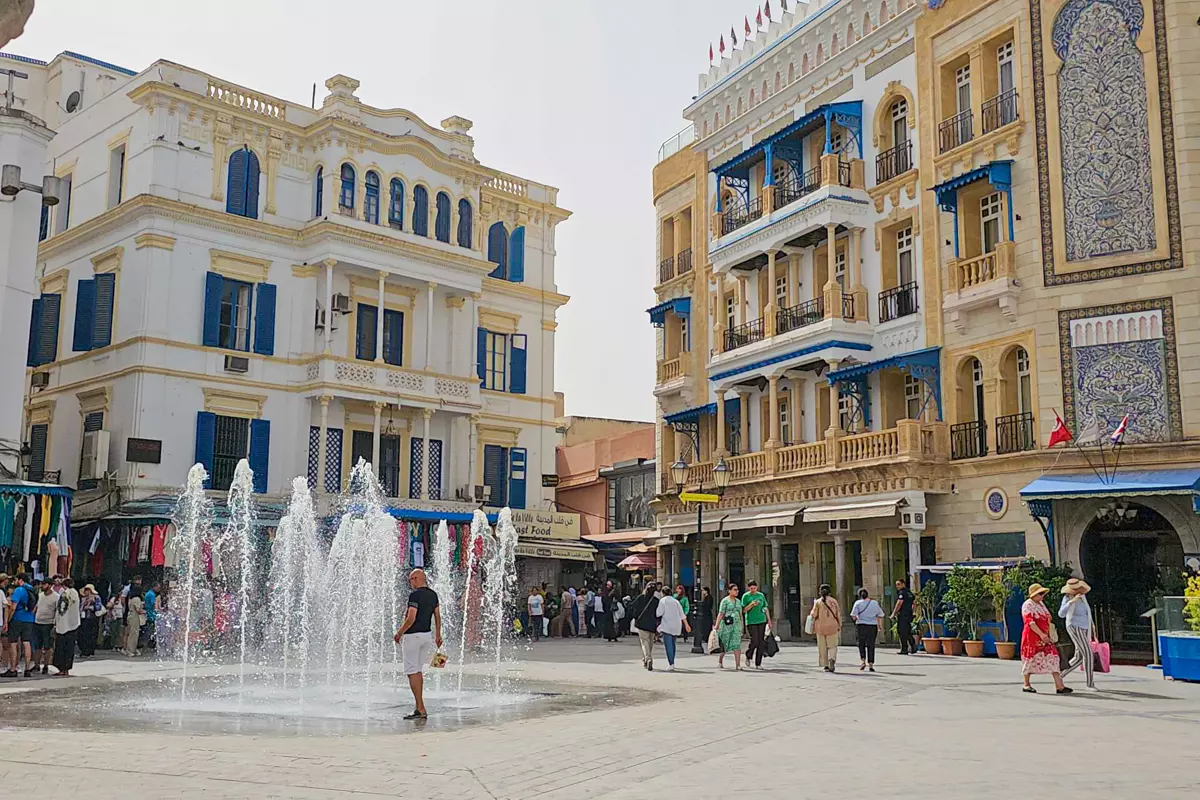
The country’s capital, Tunis, fascinates visitors with its blend of ancient heritage and modern life, seamlessly merging the city’s contemporary vibrancy with its historical legacy.
In Tunis, be sure to explore the historic Medina—a maze of narrow, charming streets lined with enchanting architecture, vibrant markets, and artisan shops. Here, you’ll find everything from fragrant spices and fine textiles to beautiful mosques and ancient doorways, all capturing the essence of Tunisian heritage. Visiting the Medina and exploring the vibrant local markets are one of the top things to do in Tunis.
If you’re in Tunis, don’t miss the Bardo Museum, which offers visitors an impressive collection of exhibits spanning a vast period: from prehistory to the present day. The mosaics fascinated me the most, with displays on the floors, ceilings, and walls.
Tip: Since Tunis is the capital, it’s easy to reach from other cities by public transport, including trains and buses, or you can rent a car.
Sousse
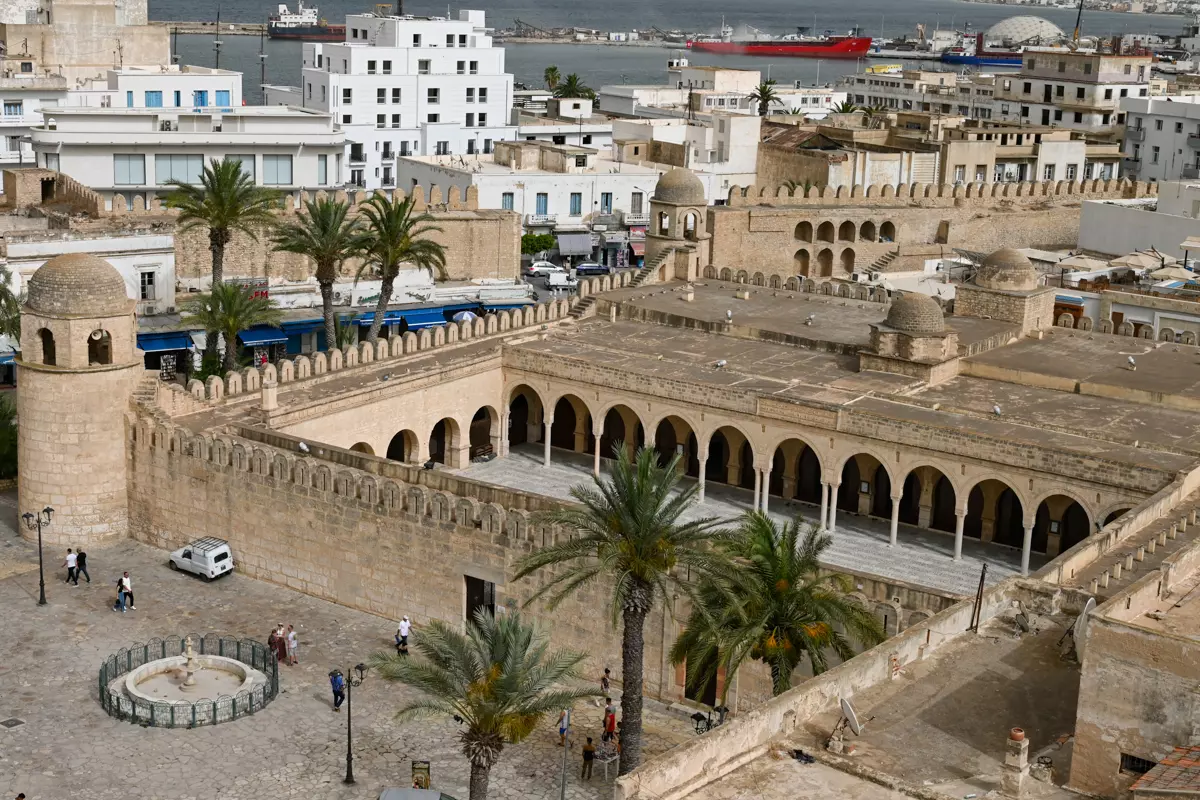
The history of Sousse, one of Tunisia’s largest cities, dates back thousands of years, when it was a significant historical landmark. Today, Sousse is a lively and diverse resort city that attracts countless tourists. This is no surprise, as Sousse offers an extensive selection of hotels, where travelers with different budgets and needs can find the most suitable option. Here, visitors will find everything: peaceful beach relaxation, a wide range of water activities, lively nightlife, a city with a deep and rich history, and breathtaking natural beauty.
Explore the impressive Great Mosque, renowned for its unique architecture, and visit the Archaeological Museum, home to an especially captivating mosaic collection. Don’t miss a stroll through the medina, encircled by 8-meter-high walls and designated as a UNESCO World Heritage Site. Interested in seeing Sousse from above? Climb the defensive tower in the medina for a panoramic view over the city. Adventure seekers will also find plenty to do here, from diving and windsurfing to golf, fishing, and more.
Friguia Park
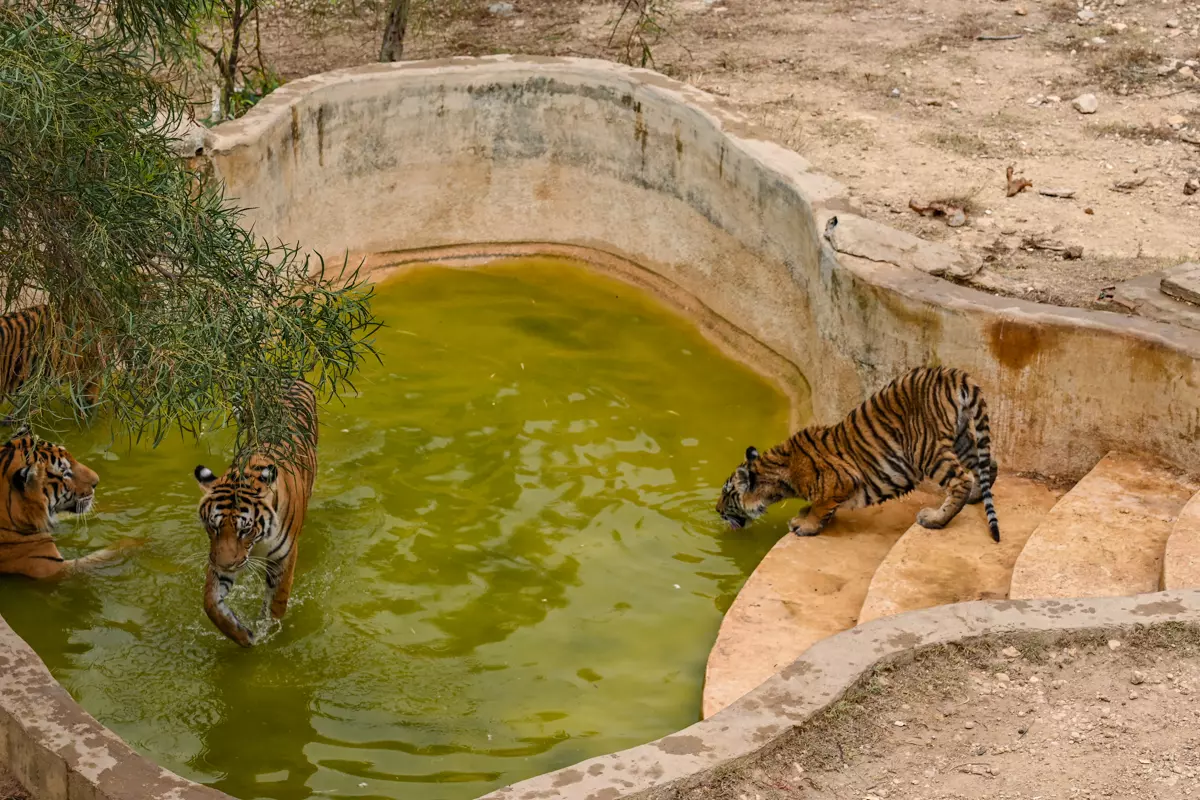
In Tunisia, you can visit the Friguia Park Zoo, an excellent spot for those traveling with children. The park covers an impressive area of 36 hectares. I loved the concept of this zoo – animals here roam freely in their natural habitats, while visitors can observe them safely from designated viewing areas and pathways. In the park, you’ll find elephants, zebras, lions, leopards, tigers, monkeys, giraffes, ostriches, pink flamingos, and many other animals, including African wildlife, predators, aquatic animals, birds, and more. There are over sixty species here!
In addition to animal watching, the park offers other activities for visitors. You can ride camels, watch African dance performances, or feed ring-tailed lemurs.
The park is located between Hammamet and Sousse, so if you’re staying at either of these resorts, it’s easy and fairly quick to reach. However, there is no public transportation to the park, so you’ll need to rent a car, take a taxi, or join a group excursion.
Also read: Things To Do In Morocco: Must-See Places
Djerba
An island belonging to Tunisia, Djerba is often rightfully called the Pearl of Tunisia. It’s a true paradise for vacationers, offering impeccable relaxation despite its small size. First and foremost, its 100-kilometer coastline boasts stunning beaches, a perfect blend of sun and sea, and romantic sunsets. The island is said to enjoy around 300 sunny days a year, making it an ideal destination for holidays almost year-round. Adding to the island’s exotic charm are numerous palm trees, orchards filled with oranges, pomegranates, figs, apricots, and sprawling vineyards.
In Djerba’s main town, Houmt Souk, life is always buzzing. Tourists are drawn to the Arabic architecture, vibrant culture, and bustling souk with the aromas of spices, teas, and tempting local sweets. The town is also home to one of the world’s oldest synagogues. Those interested in exploring local crafts, traditions, and culture should head to the Djerba Museum. For families with children, a visit to the Djerba Explore Park is a must, featuring not only lush greenery but also crocodiles!
Vacationers on Djerba are often tempted to try water activities such as diving, boat trips, and windsurfing.
Accommodation: Here are all your hotel options in Djerba.
Kairouan
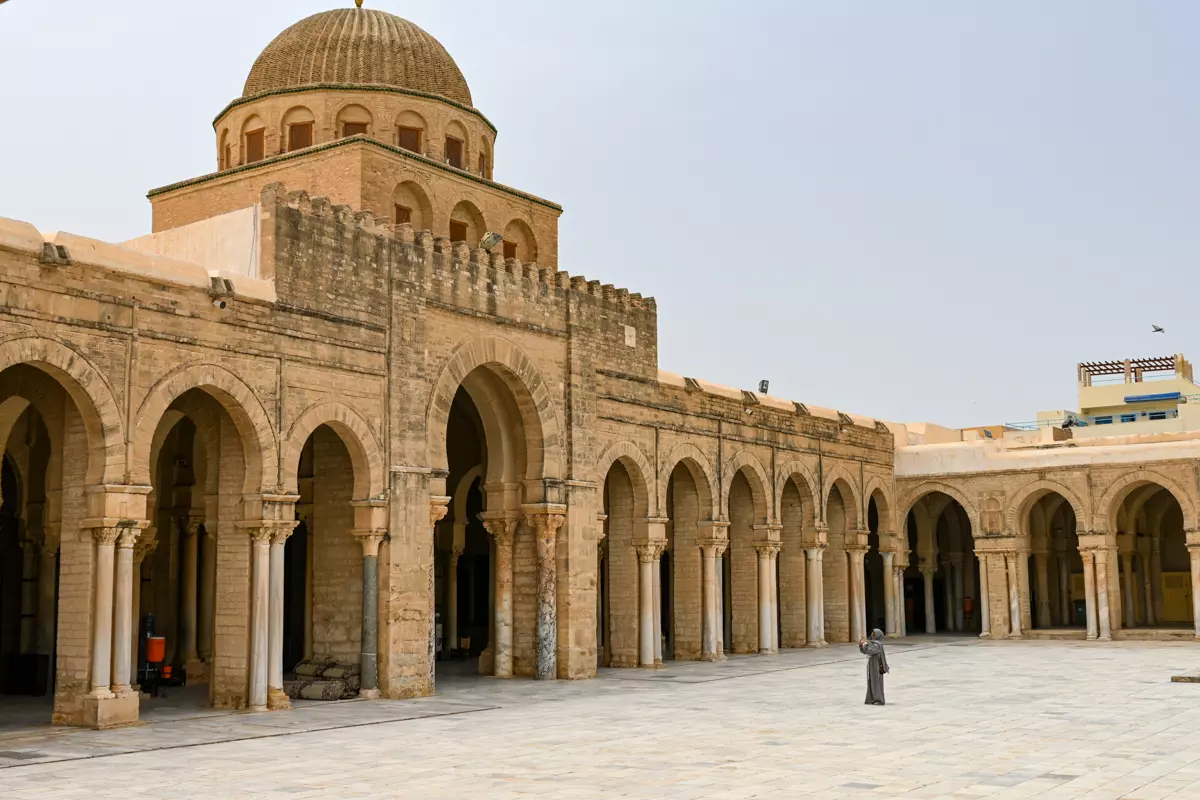
This city holds significant religious importance as an Islamic center and is considered the fourth holiest city in Islam. In Kairouan, be sure to visit the city’s main landmark, the Great Mosque of Kairouan, which is the largest and most important structure here. Originally built in 670, the mosque has been rebuilt multiple times. Today, the mosque features a minaret soaring into the sky, a spacious courtyard with arcades, and stunning mosaics.
Equally remarkable is the Mosque of the Three Gates, built in 866, along with other prayer houses in the city that captivate with their unique style, characteristic of the region. The historic charm of Kairouan is further highlighted by its old residential houses and the citadel. Be sure to stroll through the medina of Kairouan, a UNESCO World Heritage site, and immerse yourself in its timeless atmosphere.
The souk in Kairouan is a must-visit, brimming with vibrant colors, enchanting scents, and lively sounds that create a charming, if slightly chaotic, atmosphere. It’s the perfect place not only to shop for souvenirs but also to admire the exquisite craftsmanship of local artisans. One of the highlights is watching handmade carpets being created – true works of art. In fact, Kairouan is one of the best places to experience this traditional craft up close, offering a fascinating glimpse into the region’s rich cultural heritage.
Tunisia Tours & Activities
Traveling to Tunisia offers visitors a chance to enjoy a variety of exciting activities. Here, you can embark on a guided day tour of Tunis, Carthage, or Sidi Bou Said. Those seeking more active pursuits can go on a mountain biking day trip, try a hot air balloon ride, or learn to dive on the island of Djerba. I also highly recommend taking advantage of the unique opportunity to explore the Sahara Desert. You’ll be able to admire the vast sand dunes while riding camels, greet the morning sun near the salt lake of Chott el Jerid, and venture by jeep into mountain oases. This is one of the most unforgettable things to do while visiting Tunisia.
How To Get To Tunisia
Tunisia has eight airports, five of which handle international flights. Tunis-Carthage and Monastir Habib Bourguiba airports are the largest, handling most international passengers. Djerba, Tozeur, and Tabarka also receive international flights.
To reach Tunisia from Europe conveniently and affordably, you can choose airlines such as Tunisair, Nouvelair Tunisie, Transavia, Air France, Lufthansa, or Turkish Airlines.
When searching for the best flight deals, I always choose Skyscanner. This platform allows me to easily compare prices across different airlines and quickly find the cheapest option.
Climate In Tunisia
Tunisia has a Mediterranean climate, meaning summers are generally hot (with the highest temperatures inland and in the southern parts of the country), while winters are mild. In spring and autumn, the weather becomes cooler and more refreshing.
Many people choose to travel to Tunisia between March and May or between September and December to enjoy the pleasant temperatures. Rainfall is usually highest during the cooler months of the year. In August, the average high temperature is 29°C, while in winter, the average hovers around 13°C. During winter, the sun shines for about 7–8 hours per day, whereas in summer, it shines for up to 12 hours daily.
Average Temperature
Places To Stay In Tunisia
Tunisia offers a range of fantastic accommodations, from luxurious beach resorts along the Mediterranean coast in places like Hammamet and Sousse to charming boutique hotels in the medinas of Tunis and Sidi Bou Said. For a unique experience, you can stay in desert lodges near Douz or in traditional guesthouses in Tozeur, offering a glimpse into Tunisia’s rich culture and landscapes.
I’ve compiled a selection of hotels in major cities and unique locations throughout the country, tailored to various budgets. I hope you’ll find the best accommodation option among them.
Hotels In Sousse
- Hotel Haris is located in the Sousse medina, providing easy access to the city’s main attractions.
- Occidental Sousse Marhaba – situated near the beach, this hotel offers all-inclusive dining. Rooms are equipped with air conditioning, flat-screen TVs, balconies, and bathrooms with bathtubs.
- Jaz Tour Khalef – an exceptional hotel located on the outskirts of Sousse, next to a beautiful beach. Guests can enjoy spa treatments, fine dining, and various leisure activities.
Hammamet Hotel Choices
- Hotel Khella – a budget hotel just a few hundred meters from the medina, perfect for those looking to experience Hammamet’s authentic atmosphere.
- Iberostar Waves Averroes – located by the beach in Yasmine Hammamet, this resort impressed me with its excellent value for money. The friendly staff, talented entertainers, and delicious food made my stay truly enjoyable.
- La Badira – Adult Only – this luxury hotel boasts three pools, a spa, a wellness center, and a variety of other premium services.
Hotels In Tunis City
- Hôtel Suisse Tunis – a budget-friendly hotel just a 10-minute walk from the medina.
- Dar el Medina – a highly-rated hotel situated just a few hundred meters from the medina.
- Dar El Jeld Hotel and Spa – a luxurious hotel providing easy access to Tunis’s main attractions.
Traveling Around Tunisia
For those looking to explore Tunisia, there are several ways to get around: by plane, bus, train, or rental car. Tunisia is a large country, so if you plan to travel extensively, consider flying with Tunisair. With eight airports in Tunisia, flights between major cities offer a convenient option.
You can also travel around Tunisia by train, which offers three classes: second class, first class, and Comfort class. Modern train cars have only one class – Express. Comfort class is equivalent to first class, but with more space. It’s best to buy train tickets at the station, and if you want to check the schedules, use this website.
Traveling by bus is also convenient in Tunisia, but during the summer, I recommend booking tickets in advance. Buses from Tunis reach nearly every city in the country, with frequency depending on the destination. For more information, visit the official SNTRI website.
Taxi services are available in many Tunisian cities. Yellow taxis in Tunisia offer reasonably priced services, and most are equipped with meters. If a taxi does not have a meter, remember to agree on the fare upfront. Long-distance taxis, also known as shared taxis or louages, are also popular in Tunisia. These are white minibuses with a black stripe, and their fares are similar to those of buses and trains. Shared taxis offer faster and more convenient travel, although they depart only once enough passengers have boarded. During my trip in Tunisia, I used a private driver, but traveling around by rental car is also an option.
Faqs About Things To Do In Tunisia
Tunisia is best known for its rich history, stunning Mediterranean beaches, ancient landmarks like Carthage and the El Djem amphitheater. It also offers a unique cultural blend and the breathtaking landscapes of the Sahara Desert.
Tunisia is a large country, so it depends on what you want to do and see. I spent 7 days in Tunisia, but it wasn’t enough to fully enjoy the beaches and main attractions. For the best experience, plan for at least 10 days.
The best time to vacation in Tunisia is from March to May and from September to November. I don’t recommend traveling to Tunisia in the height of summer. The heat can make travel challenging, and the coastal towns are often packed with tourists.
The currency of Tunisia is the Tunisian dinar. Interestingly, you can exchange currency at almost any hotel. Don’t forget to keep the receipt from your exchange and save it until the end of your trip.
From your trip to Tunisia, I recommend bringing back olive oil, spices, or oil-based perfumes. Ceramics, copperware, wool carpets, leather goods, and colorful jewelry also make great gifts for friends or family. Don’t be afraid to bargain – haggling is common in Tunisia.
Tunisia is generally safe to visit, with a strong security presence in tourist areas and at major attractions. During my trip, I felt safe throughout, including while exploring cities, souks, and historical sites.
Book your flight
For the best flight deals, I always rely on Skyscanner. Features like Multi-city and Explore Everywhere help me uncover incredible travel opportunities.
Rent a car
Discovercars is my top choice for comparing car rental prices for any road trip around the world. The booking experience is always smooth and easy.
Travel insurance
SafetyWing provides affordable travel medical insurance with global coverage, perfect for digital nomads and long-term travelers.
Book Tours & Attractions
Experiencing a destination to the fullest is easier with a well-planned itinerary. I use GetYourGuide for guided tours and Tiqets for quick access to museum and amusement park tickets.
Protect yourself online by VPN
No matter where I go, I always use NordVPN for secure browsing and to ensure I can access websites that might be blocked in certain countries.
Disclosure: I only suggest companies that I personally rely on. If you use the affiliate links in my posts to book services, I’ll earn a small commission, with no extra cost to you.
Here’s a list of the top things to do in Tunisia. Which ones do you want to see?
Share on

Hi, I’m Evelina, a travel enthusiast who loves nature, peace, and authentic places. I cherish the freedom to explore and learn with each adventure, whether it’s hiking trails, stunning beaches, natural parks, unique architecture, or rich cultural heritage. I hope my experiences inspire you to embark on your own journeys!
